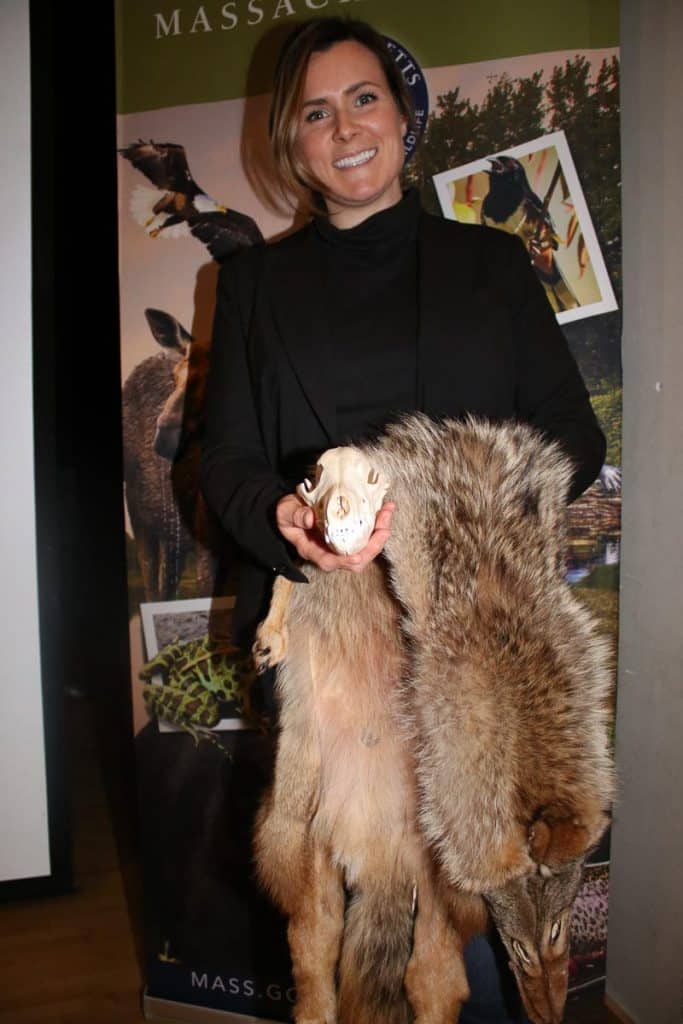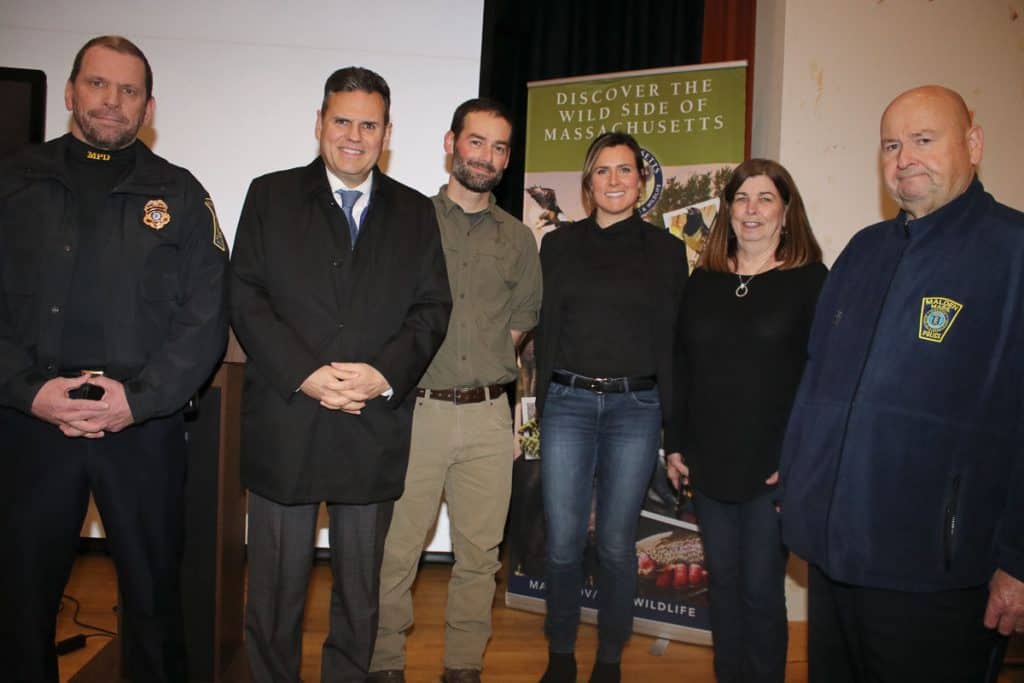Biologists from the Mass. Division of Fisheries and Wildlife presented a discussion on coyotes last Thursday night at Forestdale School. Northeast District Wildlife Biologist Chalis Bird and Black Bear & Furbearer Project Leader David Wattles, from the Mass. Division of Fisheries and Wildlife, presented their case for humans and coyotes to coexist.
Describing the coyotes’ natural territory, such as in rural areas, food is displaced so coyotes have a larger home range,” Bird said. “In urban areas, their food range is approximately five miles.”
Coyotes howl to communicate with each other and to attract a mate during breeding season. Their populations are dynamic and ever-changing based on food resources.
Bird provided a Question-and-Answer session with the audience, including on what coyotes eat and what time of day they come out. Coyotes will eat small mammals. Coyotes are active during the day, even when they’re sick. Children often mistake a domestic dog, which has a robust shape, for a coyote. The Mass. Division of Fisheries and Wildlife gets more dog bite than coyote reports. Their fur is adaptable for winter and summer seasons.
Bird said she doesn’t recommend relocating or killing them since they’re here to stay. Relocating wildlife is illegal, unless it’s done professionally by the state. There are hunting and firearm discharge restrictions also in place.
“Hazing, such as using air horn or whistle, and eliminating food sources can help to control the population near your home,” Bird said. “It’s about educating people, not harming them.”
Wattles added that people can bang pots and pans to steer away coyotes from returning near humans. “We’re trying to teach coyotes not to come near homes,” Wattles said. “If it’s being harassed, it won’t want to be sitting in your backyard.”
She advised people not to charge at them and don’t run either. Coyotes can jump fences, like dogs.
“It’s best to remember that they are here to stay,” Bird said. “Tolerate their behavior well within reason.”
She added that conflicts often come from unintentional feeding, such as trash, compost, pet food or birdfeed being left outside. They frequently visit areas in the day and night.
An audience member asked if coyotes come out in groups. Wattles replied that that’s how they teach their young how to survive on their own and to hunt.
Bird advised against intentionally feeding coyotes. If neighbors feed them, either have a conversation with them against that or have an animal control officer talk to them.
“If you live near conservation land, that’s a place that coyotes are naturally going to be,” Wattles said.












